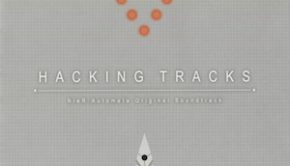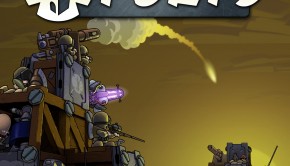Rich Vreeland (aka Disasterpeace) Interview: Breaking Out with FEZ
2012 has been a big year for veteran chiptune composer Rich Vreeland (aka Disasterpeace). His innovative score for much-publicised indie sensation FEZ turned many heads with its colourful, ambient chiptunes sounds — so much so that it will be the only indie game composition on the upcoming The Greatest Video Game Music 2. However, before FEZ, Vreeland had already worked on about 30 game soundtracks and chiptunes projects.
In this extensive interview, Vreeland traces the steps he’s taken in his career so far, from his studies at Berklee College of Music and his first chiptune albums, to his work on the Bomberman and Bonk franchise, and finally his score for FEZ. During the course of the interview, he reflects on the philosophy behind his prolific album output, what it felt like to write chiptune music at one of America’s most influential music colleges, and how his numerous collaborations with other chiptune artists have influenced his work.
Interview Credits
Interview Subject: Rich Vreeland (aka Disasterpeace)
Interviewer: Simon Elchlepp
Editor: Simon Elchlepp
Coordination: Simon Elchlepp
Interview Content
Simon: Rich Vreeland, thanks for taking the time today to talk about your work. To start things off, could you give us some information about your musical background and education? How did you decide to study at Berklee College of Music and what academic fields did your Bachelor’s of Music in Music Synthesis encompass?

Rich Vreeland: I got interested in music fairly late. Design was the earliest passion of mine, and that was my career path until I dropped out of my first college to pursue music instead. My sister was already attending Berklee and I think it was a very impulsive thing for me to do at the time, but it ended up paying off.
I’m pretty happy that I chose to focus more on music than design. At Berklee, I spent the first two years mainly studying music theory, ear training, and traditional music, before moving more into the production side of things. The Music Synthesis major has a focus on being a self-sufficient, well-rounded computer musician. You learn about mixing, production, signal flow, and there are lots of offshoots that can be further explored, things like algorithmic music and live performance. I focused mainly on writing music, and the various facets associated with that.
Simon: Some of your earliest published chiptune material — assembled on your album Under the Influence — consists of “mostly homework assignments”, as you put it in the album description. Was composing chiptune music seen as something relatively exotic at Berklee or was it regarded as another viable form of artistic expression? Were there many fellow students that you exchanged your musical ideas with and do you think institutions like Berklee can be a sort of breeding ground for a new generations of game composers?
Rich Vreeland: I definitely felt like a fish out of water at times, as there were very few if any other people at Berklee writing chiptunes. That being said, Berklee has a Video Game Music Club, and has been introducing more and more classes related to audio in games. As a result, there are probably a bunch of people at Berklee making chiptunes now, and by a bunch, I mean exponentially more than when I was there, so perhaps, four or eight or so. There are also some excellent faculty members who have lots of experience in the game industry. Some of my friends and colleagues that I went to club meetings with have ended up also working in games, and doing pretty well.
Simon: In general, how did you start developing your own artistic voice as a chiptune composer, given that the general sound of this particular genre of music is so closely tied to a particular style and era of game music? Do you start by understanding and mimicking old game soundtracks from the 80s/early 90s, and then bend the rules you’ve learned to put your individual stamp on the music?
Rich Vreeland: I never had a plan. I’ve always just written from the hip, more or less. I would say that my style started largely as taking something completely unrelated to game music and trying to mould it to a chip sound. Over time, I learned a lot of tricks along the way, things that work and sound good, and vice versa, and listening to old game soundtracks was a part of that. I’ve also kept a mental tab of little devices and ideas that I like to use, and those who know my music best can tell if it’s my stuff. When you just write for yourself, and for the joy of it, your personality comes out and it’s pretty hard to contain it.

Simon: If I’m not mistaken, your first full-length album is 2005’s The Chronicles of Jammage the Jam Mage. What was your inspiration behind this debut album, particularly given that its length is quite considerable? How much of a challenge was it to create the album on a compositional and technological level, and what did you learn from that experience?
Rich Vreeland: Jammage is primarily music written on guitar. I had recorded a handful of the songs beforehand as guitar-based tracks, before stumbling into a more chiptune sound, which opened the floodgates for me. Chiptunes allowed me to write things that I would never be able to physically play, and I think this kind of freedom was intoxicating. I would consider the whole album a result of intoxicating amounts of freedom, as I really had a lot of fun with the whole process. One thing I struggled with was the mixing, as I had literally no idea what I was doing. I remixed the entire album three or four times, before settling on something as “good enough”. The first release of the album is incredibly boomy in the low end, and harsh in the upper frequencies.
Simon: In the years following your first album, you were involved in quite a number of collaborative, chiptune-related albums, even penning the artwork for Equip. How did these collaborations with artists like Norrin Radd (Matt Creamer) and Shnabubula (Samuel Ascher-Weiss) come about and how did they form your own compositional style?
Rich Vreeland: Creating Pause with Phlogiston (Eirik Suhrke) was a boon for my creativity. We assembled a collective of artists who we truly felt were the best musicians in chiptunes, and I think we all fed off of each other’s work. Those guys definitely rubbed off on me, and I know I rubbed off on them. Alex Mauer was a huge inspiration on my musical development, as well as Phlogiston, and on the flip side I think I might have had a small hand in Alex exploring more odd meters and things. I know that I started messing more with timbre changes and grace notes, among many other things.
Simon: After your studies had finished, how hard did you find it to break into the game industry and start a professional career in this specific area. Was it mainly a matter of having built up experience or established contacts during your study times? Now that you are an established indie game composer, is it relatively easy to land new projects?
Rich Vreeland: It was certainly daunting, and I was fortunate enough to get some breaks early on. I landed two internships while I was in college, and at the same time I started meeting indie developers and working on some small titles. I also had the chiptune thing going, and was already playing shows and had a small following. I eventually just merged the three paths together.
Simon: You have written music for games in classic franchises, such as Bomberman Live: Battlefest and Bonk: Brink of Extinction. How did you get involved in these productions and how familiar were you with these franchises’ music? How closely did you stay with their previous scores and which new facets did you bring to their musical universe?
Rich Vreeland: The Bomberman project was a result of an internship I took in college. I wrote the soundtrack with my friend Filippo Beck Peccoz, who’s also an indie game composer. Bonk: Brink of Extinction was being developed by the same team, and I think that they were pleased enough with our work on the first that they wanted to use us again. It got cancelled though, and that studio (Pi Studios) has since dissolved, as far as I know.

Simon: Your soundtracks have featured in the Indie Game Music Bundle 2 and the Indie Royale Lightning Pack. As these bundles become more commonplace and an important way to distribute music (and games), it would be interesting to hear how a composer becomes involved in these Bundles, and how is the decision made which albums to include?
Rich Vreeland: I don’t think I’ve sought those opportunities out, to be honest. I’ve just tried to work on interesting games, and write good music, and I’ve been fortunate enough that those sorts of opportunities have come my way. Deciding which albums to include is a dialogue between whoever’s putting together the bundle and myself. They may have an idea, or they may want me to suggest something, or both. I only have so many albums, and once something’s in a bundle, I try not to rebundle it again.
Simon: You are one of the few game composers who also program their own games, in your case January — “an experiment in algorithmic music generation”, as you describe it. Can you describe the idea behind the game and how you wanted to affect players through January‘s gameplay and quite melancholy mood? Given that the single notes of music in January are generated dynamically by the gamer’s actions, how did you balance this degree of randomness with the need to let gamers’ create harmonies or even melodies?
Rich Vreeland: I had an idea that I doodled one day, where a kid walks around licking snowflakes. Making it a musical game was my second idea, and it happened to be something that I thought I could create within my limited programming ability. So, I started following along with a shoot ’em up tutorial for Flixel [a flash game library and coding community], and felt myself getting the hang of it. I took some of the basic rules of a shoot ’em up, a moving character, collision with enemies, and reframed it as a snowlicking game. I also did some light reading on basic programming concepts, which I think helped a ton.
I wanted to capture the feeling of what it was like to be young and alone in the snow, which was always a fond memory of mine. I intentionally made the music somewhat ambiguous, by using a hexatonic scale. The game tracks the previous two notes that have played, and generates new musical decisions based on that. The player controls the rhythm of the music (by choosing when to lick snow), and can introduce chords and octaves by licking certain kinds of snowflakes.
Simon: One of your most interesting works outside of game soundtracks is an 8-bit cover version of Miles Davis’ masterpiece Kind of Blue called Kind of Bloop. You transformed “Flamenco Sketches” into chiptune music — how difficult was this task and how did you approach it? Did you try to preserve the original piece as far as possible, and in how far did you deviate from it?
Rich Vreeland: I have to be honest and say I didn’t have as strong an initial plan as I would have liked. I started off attempting a fairly accurate rendition of Miles’ playing, as you can hear in the beginning. But I think at some point, I got bored with that and started deviating from the original quite a bit, and introducing my own themes and riffs and what not. Despite that, it felt appropriate to me and in the spirit of jazz, to explode the form, introduce variations and even a featured solo (from Samuel Ascher-Weiss).

Simon: Some of your albums present material in revised form or material from one game split across two releases (Rise of the Obsidian Interstellar / Deorbit). You have also released a significant amount of music that didn’t make it into a finished product like a game — “another collection of forgotten children”, as you call Noon Kids. How do you decide which of your compositions you’re going to make available to the public? Since you say of Noon Kids that its musical ideas “all felt like they needed to be let go, so that I could move forward and focus on new material”, is releasing your music a bit of a cathartic process?
Rich Vreeland: Absolutely. I sit on music with the express purpose that I will finish it one day, but at some point, I think I feel like it’s not going to happen, so I should share it and move on. In the case ofDeorbit, there were a number of songs which I intended to remake for Rise of the Obsidian Interstellar, but that proved to be a very difficult process. It can be hard sometimes to “improve” on a song without bastardising the original intent/creativity of the song. This is the primary reason why “The Solar Prime Elite”, “The Sun and the Moon”, and “Sober Colony” never made it onto Rise of the Obsidian Interstellar. I also was expecting to put “Death Satellite Evasion” on the album, but I lost the original source file and had to recreate it from scratch.
Simon: One of your most significant scores to date is your soundtrack for the critically acclaimed FEZ. While most retro chiptune soundtracks are melody-driven, you went with a more ambient, minimalistic approach. What inspired this approach and how difficult was it create this kind of music using chiptunes sounds, considering their purposefully low-fi nature?
Rich Vreeland: FEZ was a very therapeutic project for me, musically. While ambient music can be difficult to write, it can also flow quite easily at times. It became a great way for me to explore different compositional techniques. There is quite a bit of improvisation on the FEZ soundtrack, which is a concept that was up to that time relatively foreign to me. It also gave me a chance to experiment quite a lot with tempo, and creating music that could breathe. Most of my music up to that point had been rather energetic, and it was nice to create something so eclectic, and yet (hopefully) cohesive.
Simon: FEZ is by far your longest score so far. Did the project’s dimensions pose particular challenges?
Rich Vreeland: The length wasn’t so much a problem. There were plenty of interactive music challenges, though. I concepted a lot of ideas for music placement, and how music would evolve as you moved through certain areas of the game. The best way to solve a lot of these problems, it turned out, was to simply go for it with an idea, put it in the game, and get a sense of its “feel”. I’ve learned that I tend to get really into certain ideas and do a whole lot of planning, only to totally modify things afterwards, based almost exclusively on how they feel.
Simon: While you’re still at a relatively early point in your career, you have already built up an extensive and eclectic portfolio. Up to this point, has your career felt like a steady evolution in the way that you compose music, or have there been any projects that felt like creative breakthroughs and changed your approach to composing music profoundly?
Rich Vreeland: I think that FEZ was in some ways a breakthrough for me, but at the same time there is some fatigue coming out of that project, and a few others that I’ve done recently. I feel like FEZ, and an unreleased title which I also did music for (about 30 minutes worth) are two of the best works I’ve ever made. I’m hoping to focus on far fewer projects in the future, but hopefully give them the highest level of attention that I’ve ever given anything.

Simon: Obviously, with today’s technology, it’s possible to do much more than just recreate vintage chiptune sounds — you can take high fidelity samples and make them sound like 8bit music through various effects. How do you determine for each project how lo-fi or high-fi it should sound? When writing chiptune music, do you conceptualise it first in its high-fi or lo-fi state?
Rich Vreeland: Aesthetic is very important, and it’s generally one of the first things I try to figure out. That being said, lately I’ve been conceptualizing most of my music at the piano. I think figuring out aesthetic is a process, like anything else. I can’t understate how important it is to put music into the game and “feel” it, to truly get a sense of what the proper direction is. Something may seem and sound amazing on paper, but it’s moot until you’ve heard it in action.
Simon: Many thanks for your time today, Rich Vreeland. Is there anything else you’d like to say about FEZ or your work in general? Do you have any messages to readers from around the world?
Rich Vreeland: My pleasure! I want to thank everyone who’s supported my music (and by proxy, me!). You guys are a huge part of why I have been able to pursue the work that I love doing. I’ve got some new material in the works, check my official website occasionally! And as always, you can stream all of my music there for free.
Posted on September 15, 2012 by Simon Elchlepp. Last modified on February 27, 2014.














